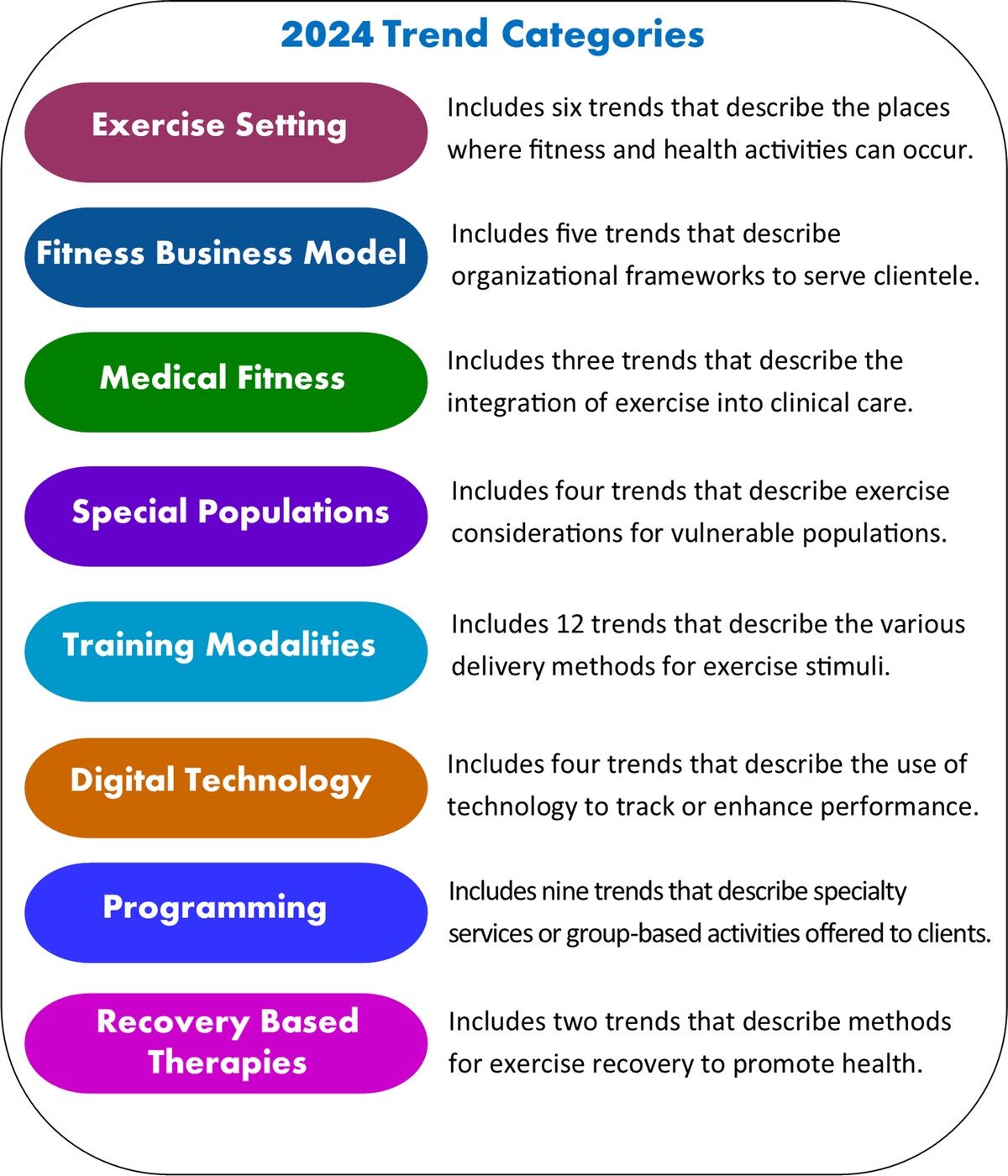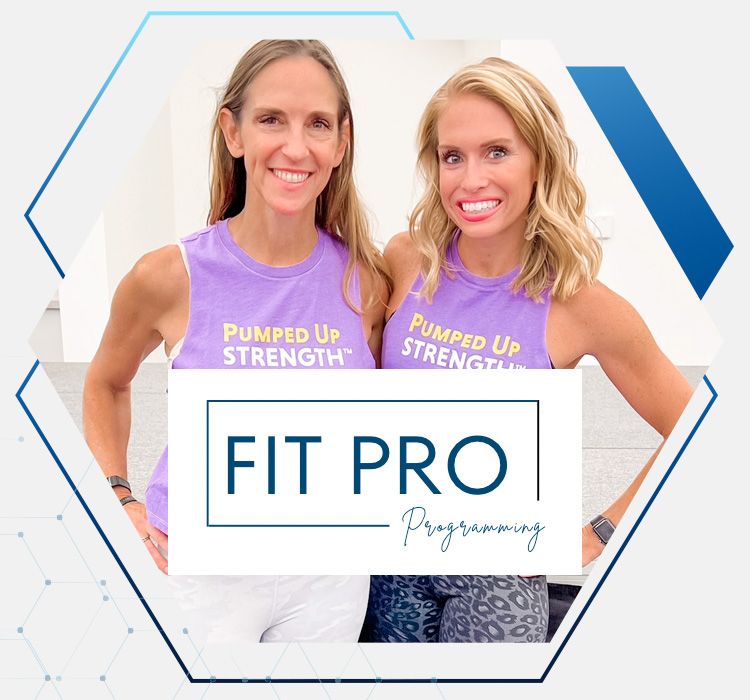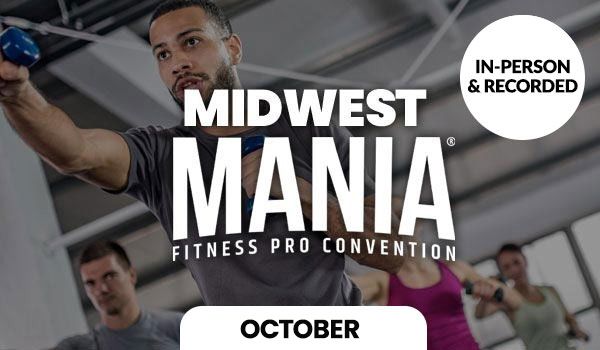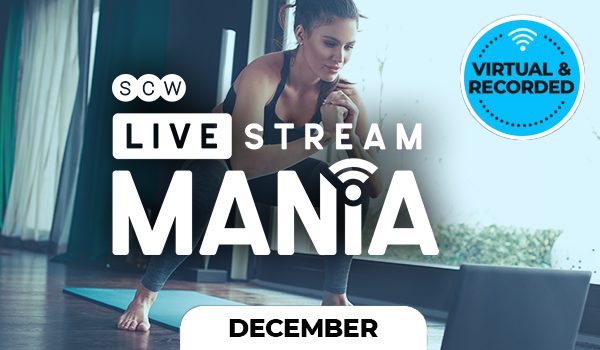

Tax Deductions Fitness Pros Often Overlook
By Erica Day
Hey there, fitness pros and micro-gym owners! We know you’re busy making a difference in your community and creating impact for your members. But when tax time hits, the chaos of running your busy fitness business can cause you to overlook deductions that could save some serious cash. 💰
We don’t want to see that happen to you this year.
We’ve got the ultimate list of the Top 50 Small Business Write-Offs, for you to check out right now. Then read on so we can explain some lesser known and commonly misunderstood deductions that can have a big impact on your tax bill.
Travel and transportation expenses
Did you know that you can claim travel and transportation expenses when you’re visiting clients or attending fitness-related events? These expenses can include airfare, hotel, meals, and car rental. Make sure to keep all receipts and track your mileage carefully, as your CPA will need this information to claim the right deductions. Not sure if you should take the actual or mileage deduction for car expenses? Get those details here to learn more:
Home office expenses
If you work from home, you may be able to claim a portion of your home office expenses as a deduction. This can include rent, utilities, internet, and other related expenses. To determine how much you can claim, you’ll need to calculate the percentage of your home that is used solely for business purposes. Grab our home office worksheet here to get started.
Continuing education and certification expenses
As a fitness professional, it’s important to stay up to date with the latest trends and techniques. The good news is that any expenses related to continuing education (like the next SCW conference you attend!) can be claimed as a tax deduction. All certification courses, conferences, and workshops should be paid through your business. Plus, the travel and meals related to any in-person workshops!
S-Corp Election
When your fitness business is taking in a net income of $40,000 to $50,000 per year or more, it’s likely time to talk to your CPA (or a CPA that is knowledgeable in small business corporate structure advantages) about taking an S-Corp election. Under this structure, you do not pay the 15.3% self-employment tax, but instead issue yourself a W2 for reasonable compensation. Being an S-Corp also opens up other tax strategies only available to this corporation type. If you need a quarterback to translate the “CPA speak” on this complicated structure, just reach out to us.
 Get ready to pump up your finances and keep more of your hard-earned cash! As a fitness pro, you know the importance of helping your clients reach their goals. Well, it’s time to reach your financial goals too. Don’t overlook these tax deductions and small business write-offs to keep your pockets full. Talk to your CPA about which deductions work for your biz, and don’t forget to keep those records and receipts handy. With a little planning, you’ll be on the road to financial success for years to come!
Get ready to pump up your finances and keep more of your hard-earned cash! As a fitness pro, you know the importance of helping your clients reach their goals. Well, it’s time to reach your financial goals too. Don’t overlook these tax deductions and small business write-offs to keep your pockets full. Talk to your CPA about which deductions work for your biz, and don’t forget to keep those records and receipts handy. With a little planning, you’ll be on the road to financial success for years to come!
Do you….
➡️ Wish your finance professional offered “office hours?
➡️ Want to learn an easier way to monitor cash flow without checking your Quickbooks?
➡️ Feel like you’d have more success in business with a “Financial” Personal Trainer keeping you accountable?
Then you’re like most micro-gym owners and fitness professionals we know, and you’d be a perfect fit for our GymFit Accountability Squad. Join us and see what our amazing, supportive community is all about!
USE CODE 2024 to get 50% off membership through January 31st, only.
Want to talk to me in person. I’ll be presenting at the Health & Fitness Business Summits at SCW DC MANIA®, February 23-25 and California MANIA®, March 22-24. Check out my Tax & Financial Fitness Bootcamp along with 16 other sessions devoted to growing your business. Also check us out at www.gymfitfinancial.com or email Erica at [email protected] with any questions.
 About the Author: Erica Day
About the Author: Erica Day
I’m a middle child, problem solver, and self-proclaimed numbers nerd. You’ll find me enjoying the small-town feel of my little neck of the woods in New Jersey. With a degree in Finance and almost two decades of entrepreneur expertise, I plan to take the Fitness Industry by storm teaching fitness professionals and micro-gym owners an easier way to manage their finances and understand cash flow. When we approach our profits through a human lens magic happens – we create more impact for our members, community and enjoy sustainable businesses that fill our cup (and wallets).
Follow us on IG: https://www.instagram.com/scwmania/
Like our FB page: https://www.facebook.com/scwmania
Follow us on X: https://twitter.com/scw_mania
Connect with us on LinkedIn: https://www.linkedin.com/company/scwfit/
Follow us on IG:
https://www.instagram.com/scwmania/
Like our FB page:
https://www.facebook.com/scwmania
Follow us on X:
Connect with us on LinkedIn:

Expand Your Business in 2024
Health & Fitness Business Summit
The 3-day SCW Business Summit from February 23-25, at DC MANIA® in Washington DC and March 22-24, 2024, at California MANIA® in San Francisco is more than just an event—it’s a transformative opportunity for individuals seeking to expand their fitness business and elevate their profession. Nested within the MANIA® convention, the Business Summit stands out as a distinct and immersive experience that caters to both individuals and teams. Hyper focused on the business side of fitness and wellness, we will equip you with the tools and insights essential for success.
EMPOWERING PEOPLE & BUSINESS
At the core of the Business Summit lies a diverse range of opportunities. Education, networking, and access to invaluable resources, all aimed at empowering attendees to distinguish themselves. The summit’s 17 Business Sessions, totaling 30 hours of content, cover these crucial areas:
• Sales strategies
• Innovative marketing techniques
• Social media essentials
• Fine-tune management skills
• Programming
• Client retention
• Leverage technology for business growth
• Manage finances effectively
• Industry trends
DC MANIA Business Summit: https://scwfit.com/dc/business/
CA MANIA Business Summit: https://scwfit.com/california/business/
Follow us on IG: https://www.instagram.com/scwmania/
Like our FB page: https://www.facebook.com/scwmania
Follow us on X: https://twitter.com/scw_mania
Connect with us on LinkedIn: https://www.linkedin.com/company/scwfit/
Follow us on IG:
https://www.instagram.com/scwmania/
Like our FB page:
https://www.facebook.com/scwmania
Follow us on X:
Connect with us on LinkedIn:

Re-Imaging Personal Training
By Bob Esquerre, MA, NSCA-CPT
Before I get into the meat of this brief article, I would like each reader to understand that I am sensitive to the world of the Personal Trainer. There will also be a few Readers from the Personal Training segment of the Health and Fitness Sector who will see this Article’s Title and discount it right away without even reading the content. They will do that because (1) the Title may seem to challenge the efficacy & viability of Personal Training and (2) assume that the writer probably has no understanding and appreciation of Personal Training. I get this mindset.
 “Because of that reality, and to assure you of my bona fide expertise, I’m going to state upfront that I have 32 years of practical experience as a GroupEX Instructor; 26 years of experience as a Personal Trainer and within those 32 years, I have eighteen years of experience as a Small & Large Group Training Coach.” My Personal Training sensitivity was developed as a Personal Trainer, as the 2nd Fitness Director and Creator & Founding Director of the Equinox Fitness Training Institute (EFTI). Yes…that’s the Equinox, founded by the Errico Family in New York City.
“Because of that reality, and to assure you of my bona fide expertise, I’m going to state upfront that I have 32 years of practical experience as a GroupEX Instructor; 26 years of experience as a Personal Trainer and within those 32 years, I have eighteen years of experience as a Small & Large Group Training Coach.” My Personal Training sensitivity was developed as a Personal Trainer, as the 2nd Fitness Director and Creator & Founding Director of the Equinox Fitness Training Institute (EFTI). Yes…that’s the Equinox, founded by the Errico Family in New York City.
Whether we work for a Club/Studio as an employee or as an Independent Contractor or have a Personal Training business that we Own & Manage, Personal Training is a “business”. We have to create our business; we have to launch it and grow our business. We have (1) to deliver training sessions (daily, weekly, monthly) and (2) make money (both gross & net income) so that we can survive as a business.
 Here is my reality check question for Club/Studio Owners, Club/Studio Managers and Personal Trainers? How many training sessions can we do daily, weekly, and monthly before we burn out? How many days a week can we work before we “tap-out”? How many times can we increase our prices before we hit our market ceiling? How do we increase our net income (i.e. profit margins) after expenses, quarter-after-quarter, and year-after-year?
Here is my reality check question for Club/Studio Owners, Club/Studio Managers and Personal Trainers? How many training sessions can we do daily, weekly, and monthly before we burn out? How many days a week can we work before we “tap-out”? How many times can we increase our prices before we hit our market ceiling? How do we increase our net income (i.e. profit margins) after expenses, quarter-after-quarter, and year-after-year?
Yes, we have incorporated (1) virtual training options into our service offerings and (2) many of us have partnered with Nutritionists to add supplementation to our service mix as well. And yes, many of us have created products that we sell to increase our income base.
I would like our Readers to “Think Outside the Box” as you read the next Section of this Article.

What If, with proper additional training, we’re able to create and launch additional fee-based services that would increase both our gross and net income per contact session?
We created and launched our Omnichannel Business Profile (CHART “A”), in Q-1, 2023.

This list consists of 8 Types of Services that have both a Live and Virtual Option. This creates a potential opportunity of up to 16 Service Programming Options, with increased fees per contact training/coaching session. All it takes is the development of a Personal Trainer with an Entrepreneurial Mindset.

The skill sets that are required to deliver Items (A) through (H) are so specialized (GRAPHIC “A”) that each Category requires a distinct set specialized technical and customer engagement training skills. [Service Item (“H”) is a top-of-the-food-chain Option that relates to Real Estate & Residential Community Wellness Programming. Option (“H”) is so unique, yet viable, that we will flush this out in a later Article].
These skill-set variations will also create a different set of Customer Outcomes. These Customer Outcomes will create the need for distinct pricing models that will increase both gross & net income for Fitness Professionals. CHART “A2” represents a potential pricing model for our Concept.

POTENTIAL PRICING STRUCTURE.
Chart “A2” represents a “Pricing Sample” that identifies services (A) through (G). As we proceed from left to right, (“A”) represents the GroupEX Fee which is the lowest compensation fee of all these services. In (B) through (G), the compensation fee to the FitPro increases based on the services that are delivered and the number of Customers (Clients) that we Train/Coach. The FitPro is incentivized to reach-out-and-touch-more-customers-per-contact-session. This is how we started to create business income opportunities that increase both Gross & Net Income. This occurs while we deliver more diversified, customer-centric services/programs at various price points. TABLE “A” below provides additional details about each Service Category.

FINAL THOUGHTS
When I had initially started talking about my Reimaging Personal Training Concept back in 2004+, I had received push back from the “Hard CORE” PT Community. However, after they stopped laughing at the idea, they remembered my successful track record in Personal Training at the Big “E”>>>Equinox! They also remembered that I had started my Fitness Career as a GroupEX Instructor. My idea left them scratching their heads.
What Do You Think? Am I really “That-Off-The-Wall” with a business model that can potentially increase both Gross & Net Income while delivering branded, customer-centric programming options that are cost effective for our customers? As a Club/Studio Owner, Club/Studio Manager and as a Personal Trainer, what do you think?
MEET OUR HYBRID FITNESS PROFESSIONAL
P.S. I was also once told that Hybrid FitPros don’t exist. Some of the “Best” Personal Trainers who I have met are those folks with GroupEX Training. Think about your Rock Stars in your facilities who are the “Best” Personal Trainers? The Robert Shermans, the Pete McCalls, the Ann Gilberts, the Abbie Appels, the Joanne Groves, the Debbie Bellengers, the Fred Hoffmans, the Irene McCormicks, the Jasmine Reddins, the Keli Roberts, the DatDiva Richards, the Amber Tooles, the Marvin Burtons, the Cecily Guests, the Roberto Melanis, the TJ McNiffs, to name only a few of the Many Hybrid FitPros.
 About the Author: Bob Esquerre, MA, NSCA-CPT
About the Author: Bob Esquerre, MA, NSCA-CPT
Bob is recognized by IHRSA as a subject-matter-expert in personal training. After his tour as the corporate fitness director at Equinox Fitness in New York City, Bob, holding a double master’s degree in Business & Economics, became known as “The Green Thumb” because of his ability to consistently create net income profits for clubs, studios, and fitness professionals nationally and globally.
Follow us on IG: https://www.instagram.com/scwmania/
Like our FB page: https://www.facebook.com/scwmania
Follow us on X: https://twitter.com/scw_mania
Connect with us on LinkedIn: https://www.linkedin.com/company/scwfit/
Follow us on IG:
https://www.instagram.com/scwmania/
Like our FB page:
https://www.facebook.com/scwmania
Follow us on X:
Connect with us on LinkedIn:

List Your Company for FREE! SCW Business Buyer’s Guide
They say nothing in life is free. Well guess what, this offer is!
Boost your company’s visibility by listing your business in the SCW Buyer’s Guide.
If you have a B2B product or program to sell, WE WANT YOU!
Need help spreading the word? SCW is there!
Need a source to promote your merchandise? SCW is there!
And it’s all for FREE!
For those who sell to clubs, facilities, or independant contractors, the SCW Buyer’s Guide is the business to business solution for you. Maybe you offer club/individual coaching, fitness app development, certifications/education, insurance, nutritional supplements, fitness apparatus, or studio design, list it all with SCW!
Click on the link below and get your name out there.
Follow us on IG: https://www.instagram.com/scwmania/
Like our FB page: https://www.facebook.com/scwmania
Follow us on X: https://twitter.com/scw_mania
Connect with us on LinkedIn: https://www.linkedin.com/company/scwfit/
Follow us on IG:
https://www.instagram.com/scwmania/
Like our FB page:
https://www.facebook.com/scwmania
Follow us on X:
Connect with us on LinkedIn:

ACSM Fitness Trends 2024
Courtesy of ACSM
ACSM’s Worldwide Survey of Fitness Trends is a valuable tool for exercise professionals. As programming and service demands evolve, the fitness industry’s response must match consumers’ needs. The 2020 survey predicted wearable technology, high-intensity interval training, and group training as potential trends ahead of the global pandemic (1). But in 2021 and 2022, we saw online training, home exercise gyms, and outdoor activities grab the spotlight as local mandates governed nonessential gatherings of large groups (2,3). As epidemiological studies documenting factors leading to the high morbidity and mortality of COVID-19 patients emerged, global consumer surveys revealed an increasing priority on health and wellness. In the 2023 survey, fitness programs for older adults (#4) and functional fitness training (#5) moved into the top 10 (4). Strength training moved up to #2 (previously #4 in 2022). Notably, specific trends added in response to quarantine mandates, such as online live exercise classes, fell out of the top 10 trends list in 2023. New to the 2024 survey were potential trends that acknowledge the bold return to in-person fitness, such as boutique fitness studios and subscription-based memberships.
The results of this annual survey guide fitness industry decision-makers. Data are gathered from thousands of researchers and practitioners to determine health and fitness trends for the following year. The first survey was conducted in 2006 by Walter R. Thompson, Ph.D., FACSM, and determined predictions for 2007 (5). For the past 18 years, the ACSM trends have been used to support the investment in personnel, equipment, and facilities (see supplemental data, Appendix 1, https://links.lww.com/FIT/A334, for a comparison of the top 10 trends from the past 18 years’ surveys). Many regions use these trends to investigate their own industry directions (6,7). Previously, these trends have been collected and reported separately (8–10) (see sidebar).
- ACSM’s Worldwide Survey of Fitness Trends is combined with the fitness trends from around the globe for a holistic snapshot of the direction of the fitness industry for 2024.
- We compare the results from the ACSM survey to data collected in other regions of the world to understand the magnitude of these trends.
- Eight trend categories were created to organize individual fitness trends and offer a thematic presentation of fitness trends that may be related.
- Readers will enjoy a more comprehensive discussion to inform business decisions.
THE SURVEY
This year’s trends survey honored the history of the original worldwide trends survey while offering enhanced validity and reliability. Industry experts reviewed trends from the 2023 survey for inclusion, and potentially emerging trends were identified through a literature review and a pilot study. The pilot study (n = 16) comprised representatives from commercial, community, medical, and academic organizations. Participants in the pilot study were primarily men (56%), with a mean age of 49 years, living/working in North America, South America, and Europe.
For the 2024 survey, there were 45 possible trends across eight categories (see below). Trend categories were designed to create a context for survey participants to understand the individual trend items better. In addition, a brief description of each trend was provided to improve interpretation. The online survey was disseminated via QualtricsXM and was completed on average in 18 minutes. Similar to previous years, an incentive to participate was made available to 10 randomly selected winners. Turn to page 30 to see this year’s prize winners. Incentives included fitness-related books and study materials published by Wolters Kluwer Health/Lippincott Williams and Wilkins and Human Kinetics and a $100 Mastercard® gift card.

Trend items were measured using a 10-point Likert-type scale ranging from 1 (not a trend) to 10 (definitely a trend). Participants also were provided a comment box to add qualitative data about the eight trend categories or potential items omitted from the current survey for future consideration. The online survey was emailed to ACSM certified professionals, ACSM alliance members, ACSM professional members, HFJ associate editors, and HFJ editorial board members (N = 24,566). A link also was provided on the HFJ web site and social media platforms, including this Journal’s Facebook page and the ACSM Instagram. After duplicates and incomplete data lines were removed, a final sample size of 1,997 was used to determine the 2024 ACSM Top 20 Trends.
Survey respondents represent a variety of occupations within the fitness industry (Table 1), with 22% indicating they were employed as full-time or part-time personal trainers. Participants were 51% men with a mean age of 39.2 years. Approximately half of the participants have 1 to 6 years of experience working in the fitness industry, which indicates a slightly less experienced demographic than previous years. Table 2 also shows the education level and primary work setting for respondents.
ACSM SURVEY RESULTS
This report for 2024 describes the top 20 potential trends defined in ACSM’s Worldwide Survey of Fitness Trends (Table 3). As in previous years, the order of trends is dynamic and reflects the changing needs of the fitness industry, although others may seem to be relatively static for a duration of time. Wearable technology has been the #1 trend each year since 2016 (with the exception of #3 for 2018 and #2 for 2021). Worksite health promotion had been ousted from the top 20 for many years (#27 for 2021, #28 for 2022, #30 for 2023) but comes in at #2 for 2024. Three of the four digital technology trends emerge in the top 20, which may indicate a continued focus on connectivity and feedback for improved fitness behaviors and outcomes. Employing certified fitness professionals, the #6 trend, moves toward the top of the trends list (#9 for 2023, #13 for 2022).
- Wearable Technology. Wearable technology is the #1 trend and has been a mainstay in the top 3 trends since 2016. Wearable technology includes a variety of devices that a person can wear or attach to themselves and are commonly connected to a smartphone. This technology provides real-time information such as heart rate, step counts, active minutes, and sleep time. Wearable technology allows exercise professionals to further individualize day-to-day physical activity for their clients, tracking patterns, performance, and progress over time (11).
- Worksite Health Promotion. Worksite health promotion is new to the trends list at #2. This seems to further support an increased interest in health and quality of life, which impacts many areas, including workplace productivity. According to the Centers for Disease Control and Prevention, the average American will spend approximately one-third of their life at the workplace when participating in a 40-hour work week. Employers have an opportunity to encourage health-promoting behaviors (e.g., physical activity and preventative screenings). These benefits often lower insurance costs, increase workplace productivity, and improve mental health (12). Some examples of worksite health promotion include access to fitness facilities, employee athletic leagues, and health education classes.
 Fitness Programs for Older Adults. Increasing fitness program options for older adults moves up to #3. The 2021 Profile of Older Americans reports a 38% increase in Americans aged 65 and older since 2010, with approximately 27% of this population living independently (13). The older adult population of Americans is projected to continue its growth through 2040. Aging increases the risk of chronic illness, cognitive impairment, and falls in this population. Regular aerobic and muscle-strengthening physical activity is an essential strategy for reducing the impact of disease, maintaining independence, and improving quality of life throughout the aging process.
Fitness Programs for Older Adults. Increasing fitness program options for older adults moves up to #3. The 2021 Profile of Older Americans reports a 38% increase in Americans aged 65 and older since 2010, with approximately 27% of this population living independently (13). The older adult population of Americans is projected to continue its growth through 2040. Aging increases the risk of chronic illness, cognitive impairment, and falls in this population. Regular aerobic and muscle-strengthening physical activity is an essential strategy for reducing the impact of disease, maintaining independence, and improving quality of life throughout the aging process.- Exercise for Weight Loss. Exercise for weight loss comes in at #4 (#8 for 2023). It is being recognized that regular exercise is a contributor to improving metabolic function and reducing body fat. Exercise should include aerobic activity, strength training, and accompany dietary changes to create a caloric deficit. Exercise aids in preserving lean body mass through weight loss efforts and helps consumers maintain long-term weight loss.
- Reimbursement for Qualified Exercise Professionals (QEPs). This trend appears at #5 and is a revised trend from previous years, which advocated for licensure for QEPs. Licensure never peaked in the top 10, and significant policy-level barriers exist that make licensure less realistic for the fitness industry in many regions worldwide. However, reimbursement for the services that QEPs are trained to provide supports recognition of exercise professionals (i.e., personal trainers and exercise physiologists) as a part of the health-care continuum. An ACSM Task Force was formed in 2021 to advocate for policy change allowing insurance billing for patient services performed by QEPs within their scope of practice to improve physical activity outcomes and quality of life (14).
- Employing Certified Exercise Professionals. Employing certified professionals, appearing at #6 for 2024, has been a consistent top 10 trend. Health and fitness companies recognize the importance of hiring trained professionals to lead fitness programs. Obtaining an accredited certification communicates to consumers that a professional has obtained proficient knowledge to support them with their fitness goals. Certified professionals can be trusted to have the minimum skill level to safely prescribe exercise within their scope of practice. Maintaining accredited certifications requires evidence of continued education, which is important for decreasing injury risk for consumers and reducing liability for employers. To find a certified exercise professional near you, check the US Registry of Exercise Professionals (https://usreps.org/). To look at certifications available through ACSM go to: https://www.acsm.org/certification/get-certified.
- Mobile Exercise Apps. Mobile exercise apps break into the top 10 trends list at #7. It is a part of the digital technology trend category. This trend first appeared in the top 20 at number 17 in 2016, under the name Smart phone exercise apps. The use of mobile exercise apps allows for flexibility in program delivery. Exercise apps have impacted the market with many unique options for consumers and demonstrate effectiveness in increasing physical activity for users. Consumers can use mobile apps to track exercise activities and receive feedback on performance. Some apps integrate mechanisms for social support and provide tips for behavioral skill acquisition, both key components of health behavior change theory.
- Exercise for Mental Health. Programming exercise for improved mental health lands at #8 as individuals begin to acknowledge the importance of movement on cognition and mood. Mental health includes emotional, psychological, and social well-being. Approximately one in every eight individuals globally is affected to varying degrees by mental illness (WHO), and regular exercise can serve as a protective factor. Physical activity and exercise can boost mood and improve mental health (15). ACSM offers resources to exercise professionals for incorporating physical activity to support mental health.
- Youth Athletic Development. The #9 trend represents an approach to youth training that focuses on developing motor skills, strength, and coordination. There is a rise in training facilities and programs such as KidStrong® designed to improve confidence, develop social skills, and enhance sports performance. Children and adolescents learn basic movement patterns and prepare for skill acquisition. Exercise professionals should consider continuing education or specialty training when working with this special population.
- Personal Training. As the #10 trend, personal training has remained a staple in the top 10 fitness trends list since its inception in 2007. Personal training provides one-on-one training involving fitness testing, goal setting, and program implementation. Consumers may benefit from this service to learn effective exercise selection, safety, and recovery methods. Earning a nationally accredited credential such as those certifications offered by ACSM can prepare exercise professionals to work with a variety of clients.
- Lifestyle Medicine. With increased consumer and industry focus on both longevity and health span (high quality of life years), it is no surprise that lifestyle medicine has moved up five spots this year to #11. Lifestyle medicine first appeared at #16 in 2020 (#18 for 2021, #19 for 2022, #16 for 2023). Lifestyle medicine promotes healthy behaviors as the foundation of health promotion, disease prevention, and medical treatment. Increasing physical activity and decreasing sedentary behavior are general recommendations for improving health outcomes for all people with chronic disease. Examples of targeted patient behaviors align with the American Heart Association’s (AHA) Life’s Essential 8, and the American College of Lifestyle Medicine recommends additional priorities such as improving nutrition, reducing stress, and enhancing social well-being.
- Outdoor Fitness Activities. Outdoor fitness activities lands at #12 for 2024. While this trend debuted as #25 in 2010, outdoor fitness activities jumped to higher ranking spots in the last several years (#4 for 2021, #3 for 2022, and #6 for 2023) due to COVID-19–related restrictions. Even as the industry finds a “new normal,” participation in fitness activities outdoors seems to be a mainstay for many brands and exercise professionals. Activities occur in public parks, plazas, or hiking trails and are led by exercise professionals. This trend supports single-day or multiday events involving running, biking, or leisure sports and encourages community engagement and social well-being.
 Health and Wellness Coaching. This trend has not appeared in the top 20 since 2010 and is the #13 trend for 2024. Health and wellness coaches integrate behavioral science principles and theories into health promotion and lifestyle medicine programs, helping bridge the gap between the clinic and community. The model positions the client as the authority on his or her behavior-change journey while the coaching professional partners to provide support and feedback using evidence-based behavior-change techniques. Coaching sessions can be individual or small group. ACSM’s partnership with Wellcoaches continues to offer certified exercise professionals with evidence-based resources to facilitate changes in mindset and behaviors surrounding physical activity. Find more resources for professional health coaching here:https://www.acsm.org/certification/professional-resources/wellcoaches.
Health and Wellness Coaching. This trend has not appeared in the top 20 since 2010 and is the #13 trend for 2024. Health and wellness coaches integrate behavioral science principles and theories into health promotion and lifestyle medicine programs, helping bridge the gap between the clinic and community. The model positions the client as the authority on his or her behavior-change journey while the coaching professional partners to provide support and feedback using evidence-based behavior-change techniques. Coaching sessions can be individual or small group. ACSM’s partnership with Wellcoaches continues to offer certified exercise professionals with evidence-based resources to facilitate changes in mindset and behaviors surrounding physical activity. Find more resources for professional health coaching here:https://www.acsm.org/certification/professional-resources/wellcoaches.- Functional Fitness Training. Falling to #14 for 2024 (#5 for 2023) is functional fitness training. This trend is a training modality that improves balance, coordination, functional strength, and endurance to enhance activities of daily living. These types of programs reflect activities the client might do during the day to maintain or improve physical function and independence (16). While developing muscular strength and power and improving balance and proprioception is essential for all adults, it is especially important for older adults and clinical populations. Because the older adult population exhibits low physical activity levels, on average, exercise professionals and industry companies should continue to prioritize functional training that reduces the risk of cardiometabolic disease, improves physical function, and the ability to live independently for longer.
- Yoga. Yoga lands at the #15 spot in the 2024 trends list. Mindfulness practice is a great way to reduce feelings of stress, improve mental wellness, and promote self-awareness. As a training modality, yoga is scalable for many fitness levels and safe for special populations. Most commonly done in group class settings with a live instructor, traditional yoga includes styles such as Hatha, Vinyasa, and Bikram. Power yoga (aka: Vinyasa) combines traditional flows with an added strength focus, whereas restorative formats (i.e., Hatha) aim to be slower and more relaxing. Yoga is now available across several settings, including boutique fitness studios and community recreation centers, but can be done individually using on-demand platforms.
- Exercise is Medicine® (EIM). As a global health initiative that appears as the #16 trend for 2024, EIM encourages health-care providers to include physical activity assessment and treatment as a standard of care when administering a care plan for patients. EIM recognizes that certified exercise professionals are an integral part of the health-care continuum. The multilevel campaign promotes awareness and education of physical activity and suggests that it should be recognized as a vital sign of health. Registered EIM programs create a structure for physicians to refer patients to evidence-based exercise programs and qualified exercise professionals. ACSM is engaged in significant advocacy work with strategic partners like the AHA and the American Council on Exercise to promote physical activity in health-care policy.
- Traditional Strength Training. This trend is a fundamental component of ACSM’s exercise guidelines but has declined considerably since 2020, coming in at #17 for the 2024 survey (#4 for 2022 and #2 for 2023). Focusing on proper movement and lifting technique, traditional strength training incorporates barbells, dumbbells, and kettlebells to improve or maintain muscular fitness by manipulating repetitions, sets, tempo, load, and exercise selection to reach different muscular fitness goals. Given the well-documented mental and physical benefits of strength training, boutique studios and big box gyms continue to innovate and promote strength training-based group exercise class formats, with MindBody Online categorizing strength training as an industry-wide top trend.
- Data-Driven Training Technology. This trend was added as a new potential trend for 2024. It appears as the #18 trend and demonstrates the significance of digital technology within the fitness industry. Clients can use real-time data output, such as heart rate, velocity, and speed, to guide their workout experiences. This type of training allows for individualized coaching and instruction even in a group setting where there may be various fitness levels, with only one exercise professional. Real-time feedback during a workout educates clients on the links between exercise programming and physiological output and helps clients self-monitor effort and intensity within and between sessions. Certified exercise professionals must stay abreast of the digital health and connected fitness landscape, leaning into data-driven training to enhance or diversify program offerings.
- Online Personal Training. Online personal training fell out of the top 20 in 2023 but returned to the list at #19 for 2024. Online personal training uses digital technology to deliver online individual and group instructional exercise programs. It may include interactive, live training sessions or asynchronous/prerecorded workout template programs from a certified exercise professional. This trend equips certified professionals with a more efficient and convenient way to reach more consumers with their training programs and expertise. In addition, online personal training may improve accessibility of services to those experiencing barriers to meeting physical activity guidelines, such as perceived lack of knowledge, time, access to facilities, and social support (17).
 High-Intensity Interval Training (HIIT). Dropping to #20 for 2024 (#7 for 2023), HIIT involves repeated bouts of short, near-maximum effort exercise (>80% maximum heart rate), followed by longer active or passive recovery periods. Recognized for its health benefits like improved peak aerobic capacity, improved cardiovascular health, and better insulin sensitivity, HIIT workouts can be programmed using various equipment options like treadmills, rowers, or bikes (18). The HIIT programming is heart rate-based training that can be customized to meet all fitness levels’ needs. It is attractive because it is time-efficient for individual or group environments. The training modality has shown cardiorespiratory fitness benefits for some special populations with chronic illnesses such as diabetes or certain cancers.
High-Intensity Interval Training (HIIT). Dropping to #20 for 2024 (#7 for 2023), HIIT involves repeated bouts of short, near-maximum effort exercise (>80% maximum heart rate), followed by longer active or passive recovery periods. Recognized for its health benefits like improved peak aerobic capacity, improved cardiovascular health, and better insulin sensitivity, HIIT workouts can be programmed using various equipment options like treadmills, rowers, or bikes (18). The HIIT programming is heart rate-based training that can be customized to meet all fitness levels’ needs. It is attractive because it is time-efficient for individual or group environments. The training modality has shown cardiorespiratory fitness benefits for some special populations with chronic illnesses such as diabetes or certain cancers.
GLOBAL TRENDS COMPARISON
Other countries and regions use ACSM’s fitness trends survey to collect data to provide a global perspective. Ten regions contributed unique data that support a more comprehensive understanding of the future of the health and fitness industry. International partners from Australia (https://links.lww.com/FIT/A325), Brazil (https://links.lww.com/FIT/A326), Europe (https://links.lww.com/FIT/A328), Mexico (https://links.lww.com/FIT/A330), Portugal (https://links.lww.com/FIT/A331), Spain (https://links.lww.com/FIT/A332), and the United States return to collaborate on this project. New for the 2024 edition of the global fitness trends comparison are colleagues from Chile (https://links.lww.com/FIT/A327), Italy (https://links.lww.com/FIT/A329), and the United Arab Emirates (UAE, https://links.lww.com/FIT/A333). Please see the country- or region-specific graphics throughout this article for more details regarding the trends globally. Each graphic includes a link to supplemental data provided by our international partners from each country/region. The top 10 fitness trends from each region can be found in supplemental Appendix 2, https://links.lww.com/FIT/A335. Here, we offer a narrative discussion on the trends that might have an impact globally.
Exercise for improved health outcomes is steering the direction of the fitness industry across the globe. Exercise for weight loss appears among the top five trends in 7 of the 10 regions (#6 in Spain, #9 in Italy). The increasing prevalence of obesity and its emergence as a global public health issue may play a critical role in the emergence of trends related to reducing obesity-related morbidities. Exercise should be a component of weight loss and weight maintenance programs. These programs are often more effective with individualized services such as personal training. Personal training is ranked in the top five trends in all regions except the United States (#10 for 2024) and Australia. This demonstrates a need for exercise professionals to understand the components of fitness programming, improved health, and represents an opportunity for enhanced business development and marketing resources for the fitness industry globally.
The EIM and lifestyle medicine trends are prominent in the top 10, further indicating that integrating exercise into health care may be on the rise in 2024. For older adults, increasing fitness through regular activity can protect against chronic disease progression, improve cognitive/physical function, increase capacity for independent living, and support social well-being during aging. Muscle-strengthening exercise is particularly critical to reducing fall risk in this population and is suggested to be a significant trend across the globe in the coming year. Trends related to health and special populations seem strong, promoting a promising collaboration between the medical and fitness communities to support public health through physical activity and exercise.
 The fitness industry is more regulated in some countries and regions than others. However, employing registered or certified exercise professionals is among the top 10 trends in 7 of the 10 regions (#2 in Portugal and Spain, #4 in Chile and UAE). Because some inherent risks are involved with beginning an exercise program for consumers, fitness business models across the globe can improve service quality and address risks by hiring highly trained exercise professionals to support clients.
The fitness industry is more regulated in some countries and regions than others. However, employing registered or certified exercise professionals is among the top 10 trends in 7 of the 10 regions (#2 in Portugal and Spain, #4 in Chile and UAE). Because some inherent risks are involved with beginning an exercise program for consumers, fitness business models across the globe can improve service quality and address risks by hiring highly trained exercise professionals to support clients.
Wearable technology maintains its #1 position in the United States but fell a few spots to #9 in Australia (#6 for 2023). In the UAE, wearable technology ranked #10. The wearable technology trend appears only once in recent global trends reports (#4 in Europe for 2022). Digital technology trends no longer have a strong influence on the fitness industry from a global perspective. This region-specific trend may have potential cultural and socioeconomic factors contributing to differences. It is plausible that the wearable technology industry globally promotes autonomy in activities, creating a distinction between consumer-driven and industry-driven fitness activity. Therefore, this survey of exercise professional perspectives may not capture how wearable technology impacts the fitness industry. Wearable technology markets continue to rise globally, and a survey of consumer perspectives may solicit different trends for the fitness industry. The fitness industry should explore leveraging personal wearable devices to enhance consumer behaviors.
Australians have embraced a return to group training (#3 for 2024). This trend ranked #4 for 2023 and 2022. Group training was not a top trend for 2021, presumably directly related to the COVID-19 pandemic. The trend was highly ranked in Europe, Spain, and Portugal. Group training typically costs less than one-on-one personal training services and positively impacts adherence and motivation for some clients. This type of programming offers clients guidance and support and may be an alternative to personal training.
Functional fitness training sits on top of the Spanish survey results. This training modality is ranked #4 in Australia and Brazil and #5 in Mexico. It should be noted that functional fitness training appears in the top 20 trends for all regions represented in this year’s global survey. This is a recurring theme consistent with past global trend surveys and reinforces the demand for exercise that supports daily activities of living. Functional fitness training improves movement patterns, addresses muscular imbalances, and can help protect against injuries.
LIMITATIONS
This survey continues to offer powerful insight into the future of the health and fitness industry, but there are a few methodological limitations to consider. First, the dissemination of the survey differed from previous iterations and does not allow for an accurate comparison of response rates to previous years. In addition, readers should use caution when comparing all trends between regions. Some regions included additional trend items unique to that specific region. Therefore, some trends are not compared in every region for the global comparison. It is important to acknowledge these regional differences while appreciating the impact that looking broadly at trend categories has for supporting exercise professionals working globally. Finally, participants in this survey are exercise professionals working in the fitness industry as researchers and practitioners. Readers should note that perspectives on trends may be different for consumers.
SUMMARY
The fitness industry is a dynamic space, and this global survey is important for exercise professionals and industry leaders. Trends for 2024 indicate that the fitness industry has the potential for a greater impact on health outcomes, including mental health. There is promise for enhanced collaboration with the creation of multidisciplinary teams in medical care that include qualified exercise professionals. Trends such as personal training and functional fitness training remain relevant to the fitness space globally.
 The increase in international partners contributing to the global trends perspective makes this a robust comparison of trends as the world moves toward a new normal postpandemic. For the first time, there is synergy between ACSM’s Worldwide Survey of Fitness Trends and the Global Fitness Trends articles, which have provided invaluable information for many years. Combining these manuscripts allows readers to explore fitness trends with a holistic lens. In addition, the creation of trend categories for the ACSM survey offers readers a broad understanding of the aspects of the fitness industry that could potentially drive the market in 2024, which is important for business development, resource allocation, and professional development planning.
The increase in international partners contributing to the global trends perspective makes this a robust comparison of trends as the world moves toward a new normal postpandemic. For the first time, there is synergy between ACSM’s Worldwide Survey of Fitness Trends and the Global Fitness Trends articles, which have provided invaluable information for many years. Combining these manuscripts allows readers to explore fitness trends with a holistic lens. In addition, the creation of trend categories for the ACSM survey offers readers a broad understanding of the aspects of the fitness industry that could potentially drive the market in 2024, which is important for business development, resource allocation, and professional development planning.
The Trends Work Group would like to acknowledge the collaboration of our international partners and the data provided to support the global comparison of fitness trends [Chris Alexander, AEP, AES, GCBA.; Paulo Costa Amaral, Ph.D., MBA, M.Sc.; Roberto Dignola, MBA; Frano Giakoni-Ramírez, Ph.D., M.Sc.; Franco Pinochet Peña, M.Sc.; Alexios Batrakoulis, Ph.D., M.S., FACSM, ACSM-EP, ACSM-CPT, CSCS; Angela Di Baldassarre, M.D., Ph.D.; Andrea Di Credico, Ph.D.; Stefania Orrù, Ph.D.; Antonino Bianco, Ph.D.; Lino Francisco Jacobo Gómez-Chávez, Ph.D.; Paola Cortés-Almanzar, Ph.D.; Jorge López-Haro, B.Sc., M.Sc.; Adrián Ricardo Pelayo-Zavalza, M.S.; Luis Eduardo Aguirre-Rodríguez, B.Sc.; Susana Franco, Ph.D.; Rita Santos-Rocha, Ph.D.; Fátima Ramalho, Ph.D.; Vera Simões, Ph.D.; Isabel Vieira, M.Sc.; Liliana Ramos, Ph.D.; Oscar L. Veiga, Ph.D., M.Sc.; Juan José Palos Perez, M.Sc.; Manel Valcarce-Torrente, Ph.D., M.Sc.; Ivana Banićević, Ph.D.(c), M.Sc., B.Sc.; Dragan Stankić, Ph.D.(c), M.Sc., B.Sc.; and Željko Banićević, Ph.D.(c), M.Sc., B.Sc.].
A special thank you to Managing Editor Lori Tish, Editor-in-Chief Brad A. Roy, Ph.D., FACSM, and Associate Editor-in-Chief Paul M. Gallo, Ed.D., FACSM, for providing support and guidance to the Trends Work Group. We share our gratitude for the vision of ACSM’s Past President Walter R. Thompson, Ph.D., FACSM and the work of Vanessa Kercher Ph.D., M.Ed., FACSM, ACSM-EP, CHWC and Kyle Kercher Ph.D., ACSM-EP, CPT, CSCS, PMP, CHWC, in establishing global partnerships to recognize and compare fitness trends with our international collaborators.
References
1. Thompson WR. Worldwide survey of fitness trends for 2020. ACSMs Health Fit J. 2019 Nov;23(6):10–8.
2. Thompson WR. Worldwide survey of fitness trends for 2021. ACSMs Health Fit J. 2021 Jan;25(1):10–9.
3. Thompson WR. Worldwide survey of fitness trends for 2022. ACSMs Health Fit J. 2022 Jan;26(1):11–20.
4. Thompson WR. Worldwide survey of fitness trends for 2023. ACSMs Health Fit J. 2023 Jan;27(1):9–18.
5. Thompson WR. Worldwide survey reveals fitness trends for 2007. ACSMs Health Fit J. 2006 Nov;10(6):8–14.
6. Batrakoulis A, Veiga OL, Franco S, et al. Health and fitness trends in Southern Europe for 2023: a cross-sectional survey. AIMS Public Health. 2023;10(2):378–408.
7. Batrakoulis A. National survey of fitness trends in Greece for 2023. Int J Hum Mov Sports Sci. 2022;10(5):1085–97.
8. Kercher VM (Martinez), Kercher K, Levy P, et al. 2023 Fitness trends from around the globe. ACSMs Health Fit J. 2023 Jan;27(1):19–30.
9. Kercher VM, Kercher K, Bennion T, et al. 2022 Fitness trends from around the globe. ACSMs Health Fit J. 2022 Jan;26(1):21–37.
10. Kercher VM, Kercher K, Bennion T, et al. Fitness trends from around the globe. ACSMs Health Fit J. 2021 Jan;25(1):20–31.
11. Liguori G, Kennedy DJ, Navalta JW. Fitness wearables. ACSMs Health Fit J. 2018 Nov;22(6):6–8.
12. Centers for Disease Control and Prevention. Workplace Health Promotion. 2016 Workplace health model. [cited 2023 Sep 23]. Available from: https://www.cdc.gov/workplacehealthpromotion/model/index.html.
13. Administration on Aging. 2021 Profile of older Americans. [cited 2023 Oct 16]. Available from: https://acl.gov/aging-and-disability-in-america/data-and-research/profile-older-americans.
14. Kraus W. New ACSM Task Force pursues reimbursement for CEPs and EPs [Internet]. 2021 [cited 2023 Sep 20]. Available from: https://www.acsm.org/news-detail/2021/03/04/new-acsm-task-force-pursues-reimbursement-for-exercise-physiologists.
15. White RL, Babic MJ, Parker PD, Lubans DR, Astell-Burt T, Lonsdale C. Domain-specific physical activity and mental health: a meta-analysis. Am J Prev Med. 2017 May;52(5):653–66.
16. Dipietro L, Campbell WW, Buchner DM, et al. Physical activity, injurious falls, and physical function in aging: an umbrella review. Med Sci Sports Exerc. 2019 Jun;51(6):1303–13.
17. Centers for Disease Control and Prevention. Overcoming barriers to physical activity [Internet]. 2022 [cited 2023 Sep 19]. Available from: https://www.cdc.gov/physicalactivity/basics/adding-pa/barriers.html.
18. Edwards JJ, Griffiths M, Deenmamode AHP, O’Driscoll JM. High-intensity interval training and cardiometabolic health in the general population: a systematic review and meta-analysis of randomised controlled trials. Sports Med. 2023 Sep;53(9):1753–63.
Follow us on IG: https://www.instagram.com/scwmania/
Like our FB page: https://www.facebook.com/scwmania
Follow us on X: https://twitter.com/scw_mania
Connect with us on LinkedIn: https://www.linkedin.com/company/scwfit/
Follow us on IG:
https://www.instagram.com/scwmania/
Like our FB page:
https://www.facebook.com/scwmania
Follow us on X:
Connect with us on LinkedIn:

Athletech Rings Nasdaq Opening Bell
By Dr. Paul Bedford
Courtesy of Athletechnews
“It is time that the fitness and wellness industry have a serious seat at the table,” remarked Athletech News founder Edward Hertzman
Athletech News rang the opening bell at the Nasdaq on January 4, 2024, marking a significant moment for the entire fitness and wellness industry, which was well represented at the landmark event.
Alongside Athletech News, executives and influencers from leading brands and organizations such as Crunch, Equinox, Hydrow, Zumba, IHRSA, Xponential, Les Mills, Pvolve, NYSC, Restore Hyper Wellness, Tracy Anderson, Exos, Mindbody, InsideTracker, FlexIt and NASM, to name just a few, joined the Nasdaq MarketSite in Times Square.
“Athletech News aims to spark ideas and shape agendas for fitness and wellness executives in this constantly evolving and fast-moving sector,” said Kristina Ayanian, Nasdaq listing host. “They set out each day to inform these leaders with proprietary content and analysis that will help them make informed business decisions with a global wellness market estimated at over $1.5 trillion in 2021. Until now, there has not been a central repository of fitness and wellness-related content focused on the company executives and the trends that are disrupting the industry. Athletech News fills that void, and we’re lucky that you all are joining us here today.”
 Before ringing the opening bell, Athletech News founder and CEO Edward Hertzman gave an inspiring speech where he remarked on the committed and collegial atmosphere in fitness and wellness as the industry pushes for more recognition.
Before ringing the opening bell, Athletech News founder and CEO Edward Hertzman gave an inspiring speech where he remarked on the committed and collegial atmosphere in fitness and wellness as the industry pushes for more recognition.
“It is time that the fitness and wellness industry have a serious seat at the table, whether it be Wall Street, the Hill or mainstream media,” Hertzman said. “Wellness is not a week or a New Year’s resolution. It is a way of life. It’s about making mindful choices each day that contribute to our overall well-being. Athletech News is not merely a news outlet — it’s at the forefront, delivering cutting-edge insights, trends and stories that propel the fitness and wellness industry forward.”
Over 100 fitness and wellness industry leaders joined ATN to ring the bell and attended a special networking breakfast held after the event.
See more coverage of ATN’s bell-ringing ceremony here.
About the Author: Courtney Rehfeldt
Courtney Rehfeldt has worked in the broadcasting media industry since 2007 and has freelanced since 2012. Her work has been featured in Age of Awareness, Times Beacon Record, The New York Times, and she has an upcoming piece in Slate. She studied yoga & meditation under Beryl Bender Birch at The Hard & The Soft Yoga Institute. She enjoys hiking, being outdoors, and is an avid reader. Courtney has a BA in Media & Communications studies.
Follow us on IG: https://www.instagram.com/scwmania/
Like our FB page: https://www.facebook.com/scwmania
Follow us on X: https://twitter.com/scw_mania
Connect with us on LinkedIn: https://www.linkedin.com/company/scwfit/
Follow us on IG:
https://www.instagram.com/scwmania/
Like our FB page:
https://www.facebook.com/scwmania
Follow us on X:
Connect with us on LinkedIn:

Savvier Fitness, Acquired by Fit Pro Programming
Fit Pro Programming, co-founded by Tricia Murphy Madden and fitness industry veteran Lauren George, has successfully acquired Savvier Fitness Education Brands. This strategic move brings renowned fitness programs like Barre Above, Balletone, and more into their dynamic portfolio.
 For over two decades, Savvier has partnered with SCW Fitness and brought amazing programming to MANIA® attendees. Savvier has been a trailblazer in delivering cost-effective content and education to top-tier facilities worldwide. Having worked closely with Savvier, both Tricia and Lauren see this acquisition as a natural evolution, adding depth to their commitment to empowering fitness professionals.
For over two decades, Savvier has partnered with SCW Fitness and brought amazing programming to MANIA® attendees. Savvier has been a trailblazer in delivering cost-effective content and education to top-tier facilities worldwide. Having worked closely with Savvier, both Tricia and Lauren see this acquisition as a natural evolution, adding depth to their commitment to empowering fitness professionals.
Fit Pro Programming remains dedicated to providing comprehensive education without burdening instructors or clubs with hefty fees. Over 100 program specialists, infused with a wealth of expertise, are involved to further enhance their offerings. Tricia comments, “We have plans for expansion and will introduce new programs across various modalities, reinforcing our commitment to innovation and excellence. We look forward to the next chapter of growth and education in the fitness industry!”
Follow us on IG: https://www.instagram.com/scwmania/
Like our FB page: https://www.facebook.com/scwmania
Follow us on X: https://twitter.com/scw_mania
Connect with us on LinkedIn: https://www.linkedin.com/company/scwfit/
Follow us on IG:
https://www.instagram.com/scwmania/
Like our FB page:
https://www.facebook.com/scwmania
Follow us on X:
Connect with us on LinkedIn:

Looking to Hire?
SCW Can Help
In Need of Teachers, Trainers, Directors, or Managers? SCW’s new FREE JOB BOARD is supporting the industry’s need for qualified fitness pros.
Follow us on IG: https://www.instagram.com/scwmania/
Like our FB page: https://www.facebook.com/scwmania
Follow us on X: https://twitter.com/scw_mania
Connect with us on LinkedIn: https://www.linkedin.com/company/scwfit/
Follow us on IG:
https://www.instagram.com/scwmania/
Like our FB page:
https://www.facebook.com/scwmania
Follow us on X:
Connect with us on LinkedIn:
Health & Fitness Business News – February 2024
Health & Fitness Business News – January 2024
Health & Fitness Business News – December 2023
Health & Fitness Business News – November 2023
Health & Fitness Business News – October 2023
Health & Fitness Business News – September 2023
Health & Fitness Business News – August 2023
Health & Fitness Business News – July 2023
Health & Fitness Business News – June 2023
Health & Fitness Business News – May 2023
Health & Fitness Business News – April 2023
Health & Fitness Business News – March 2023
Health & Fitness Business News – February 2023
Health & Fitness Business News – January 2023
Health & Fitness Business News – December 2022
Health & Fitness Business News – November 2022
Health & Fitness Business News – October 2022
Health & Fitness Business News – September 2022
Health & Fitness Business News – August 2022
Health & Fitness Business News – July 2022
Health & Fitness Business News – June 2022
Health & Fitness Business News – May 2022
Health & Fitness Business News – April 2022
Health & Fitness Business News – March 2022
Health & Fitness Business News – February 2022
Health & Fitness Business News – January 2022
Health & Fitness Business News – December 2021
Health & Fitness Business News – November 2021
Health & Fitness Business News – October 2021
Health & Fitness Business News – September 2021
Health & Fitness Business News – August 2021
Health & Fitness Business News – July 2021
Health & Fitness Business News – June 2021
Health & Fitness Business News – May 2021













